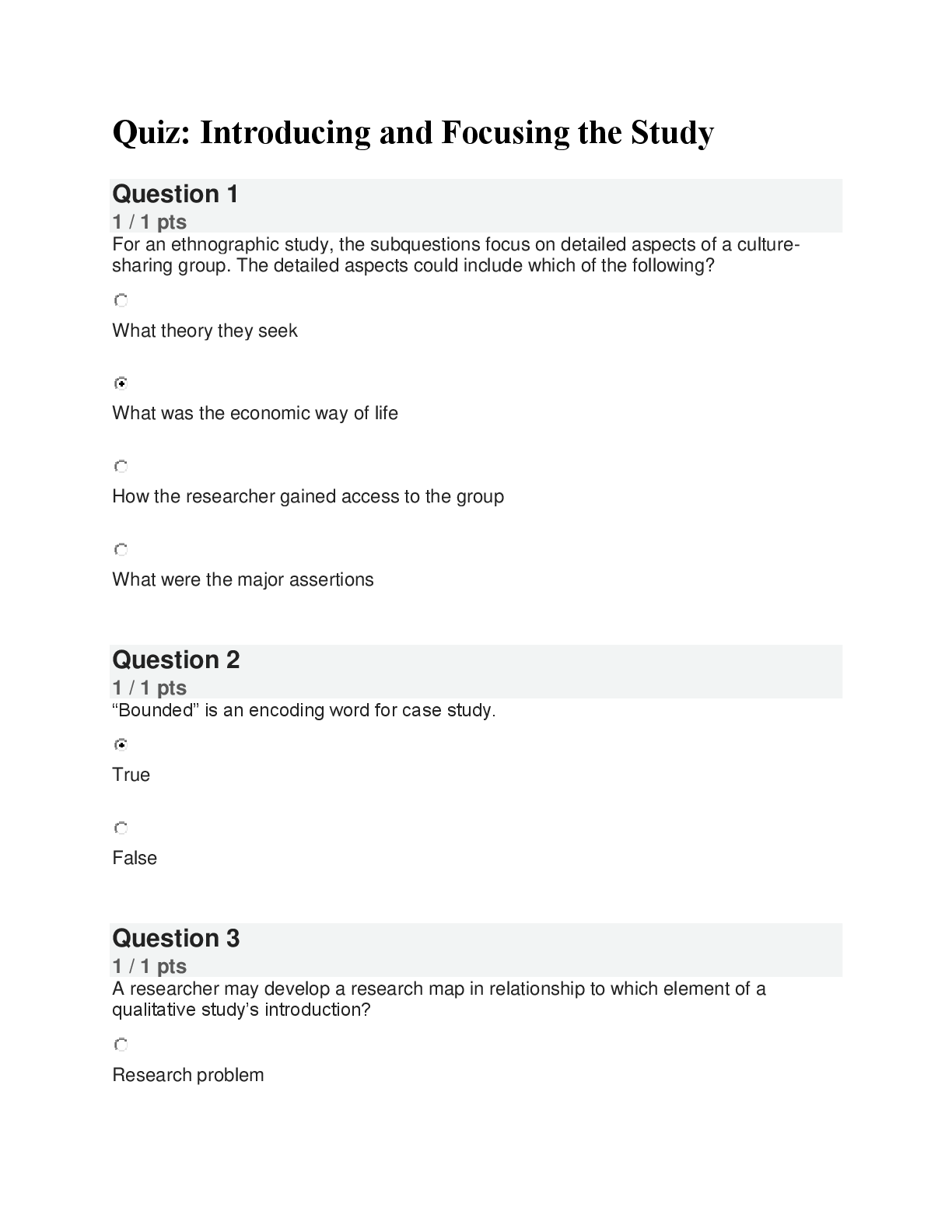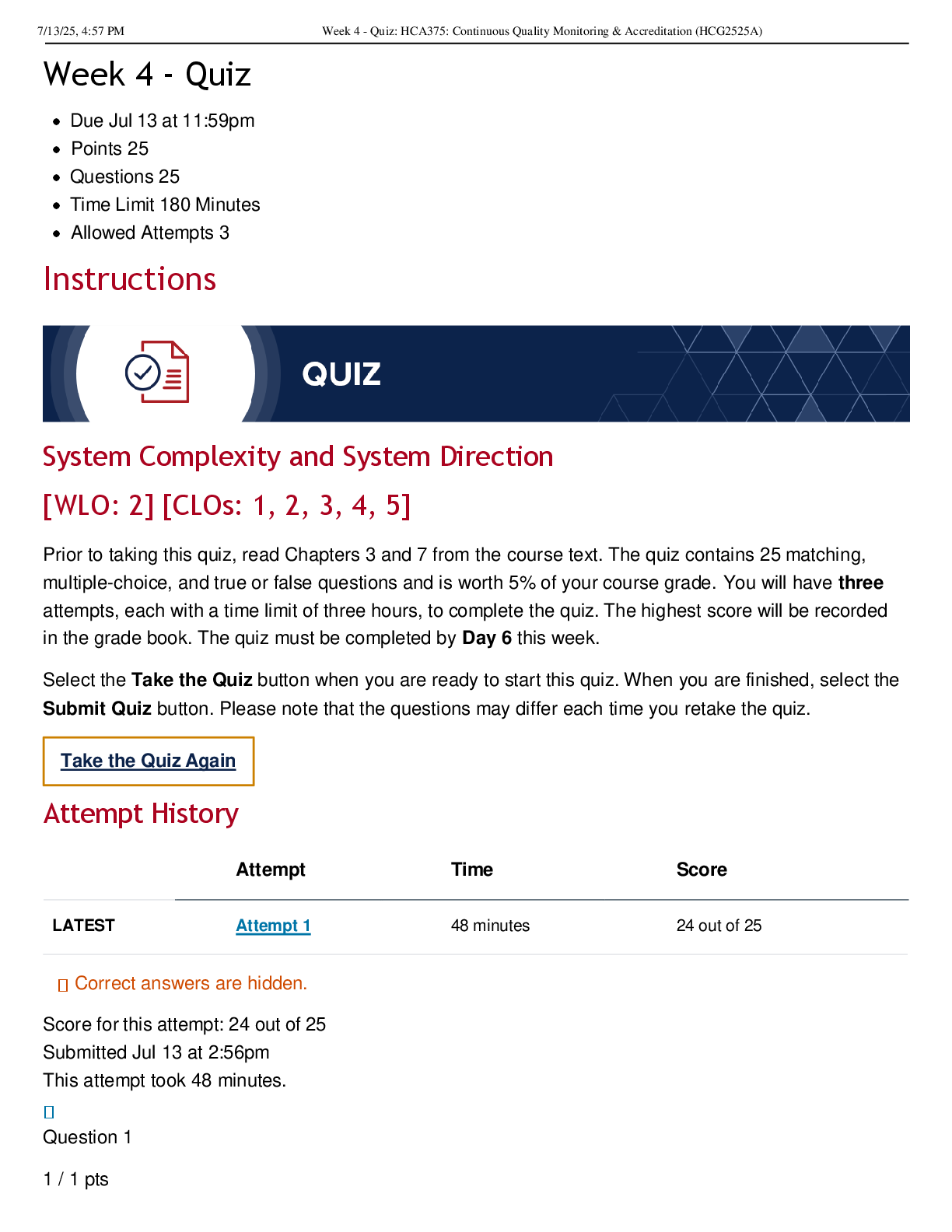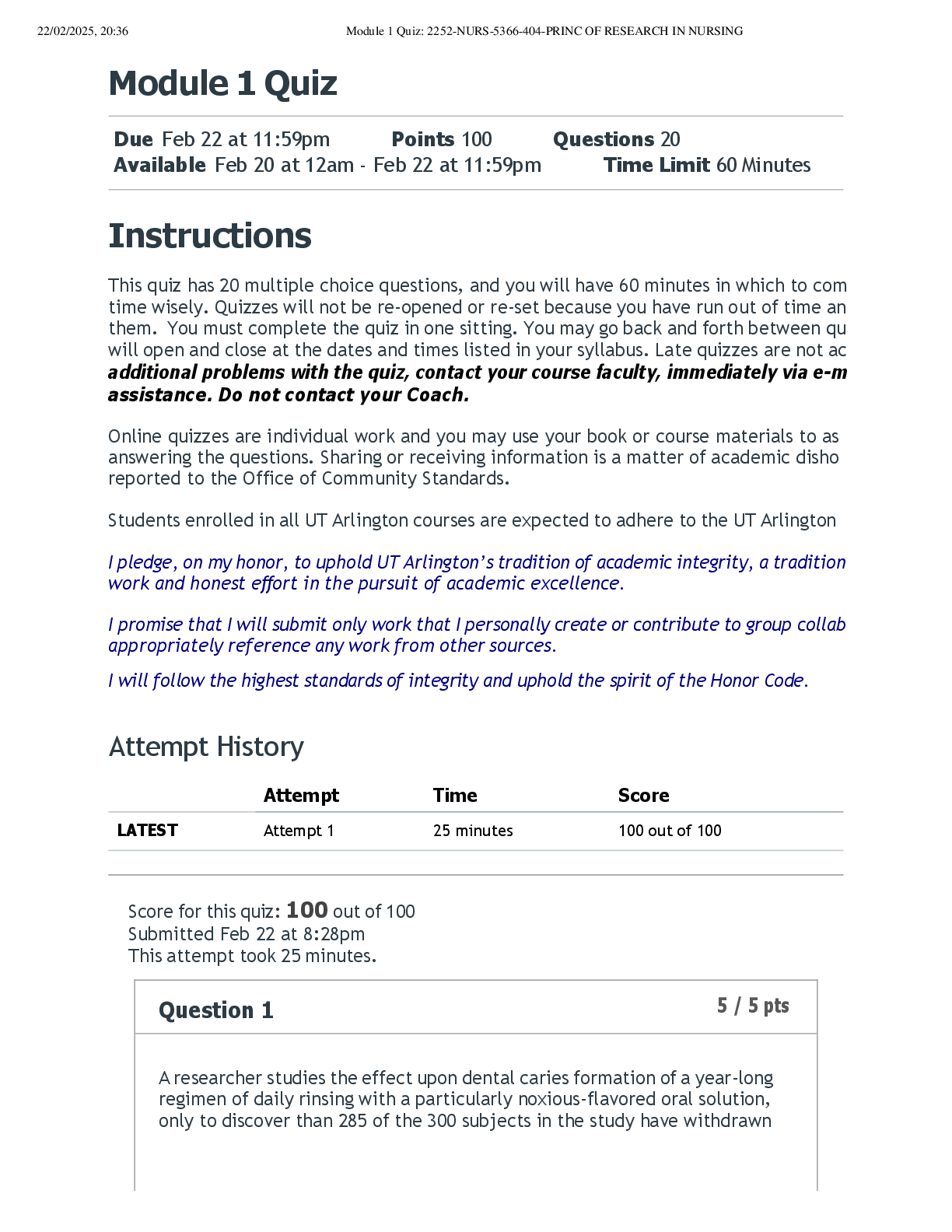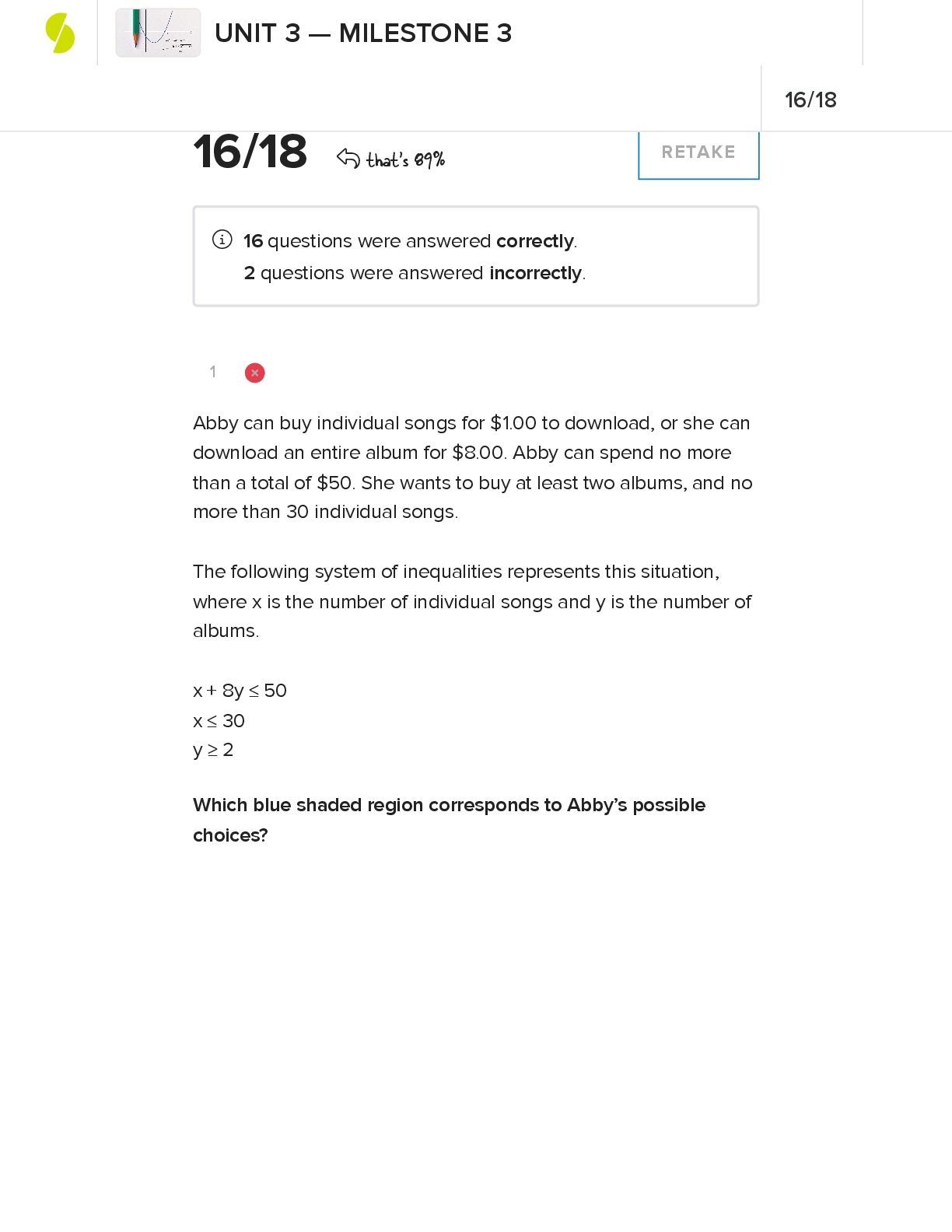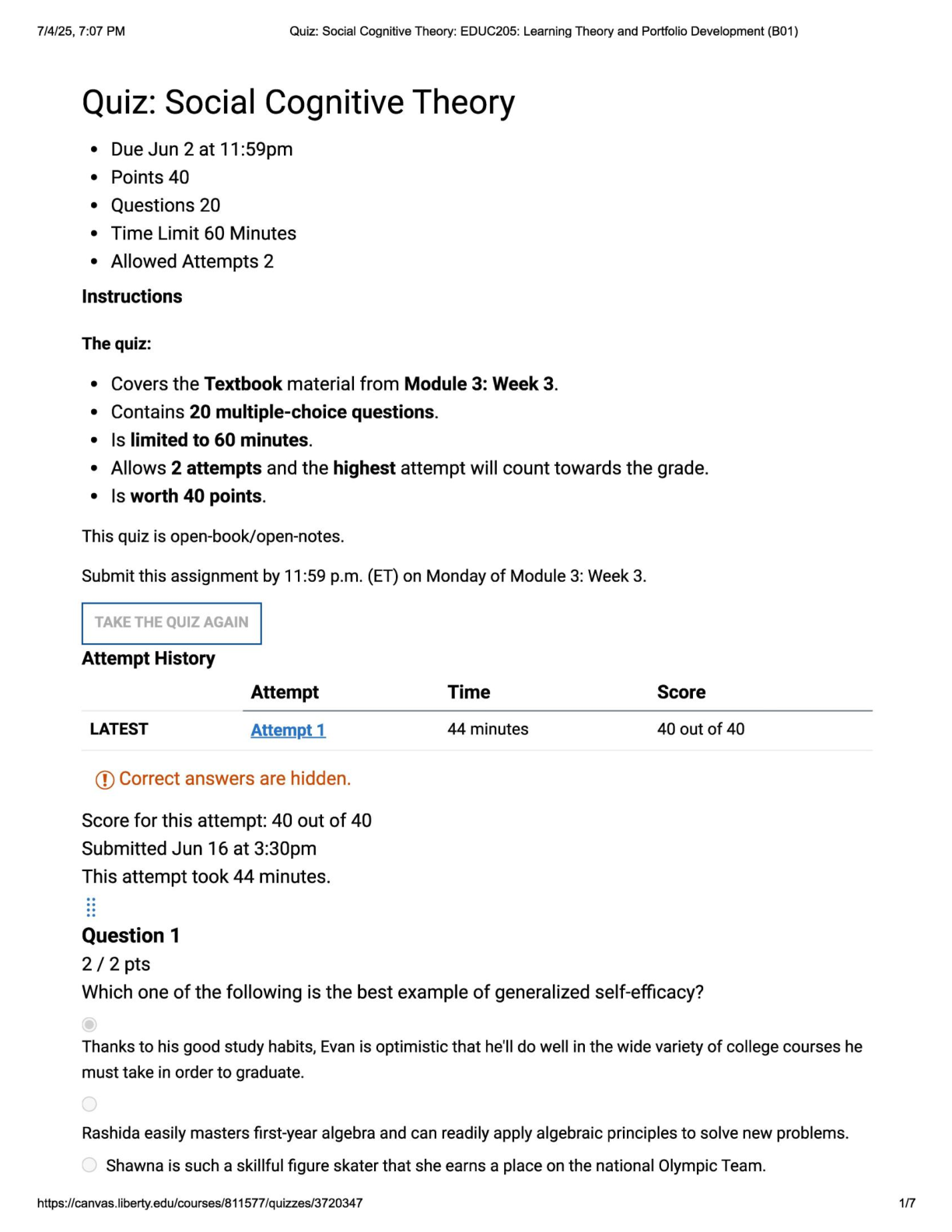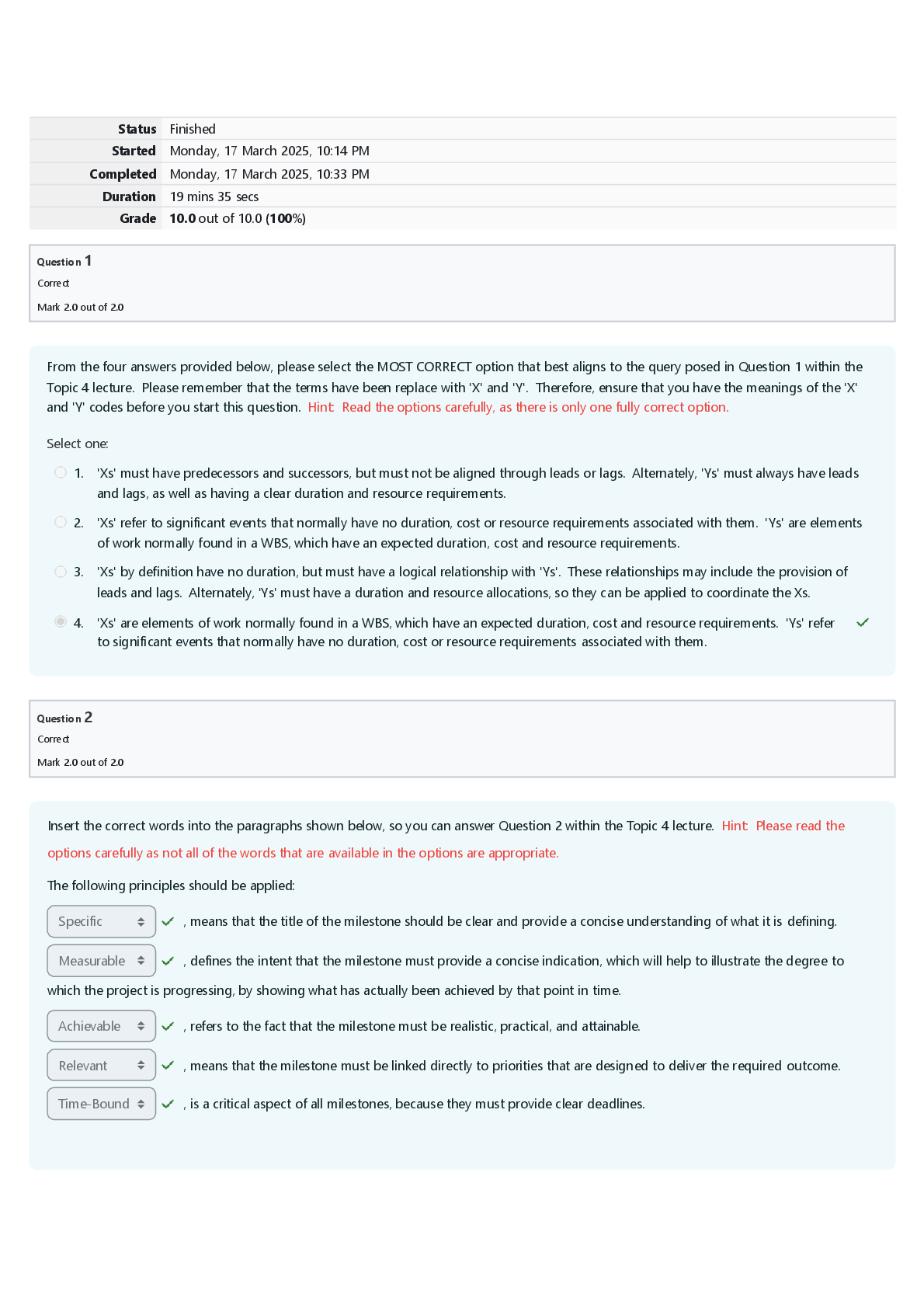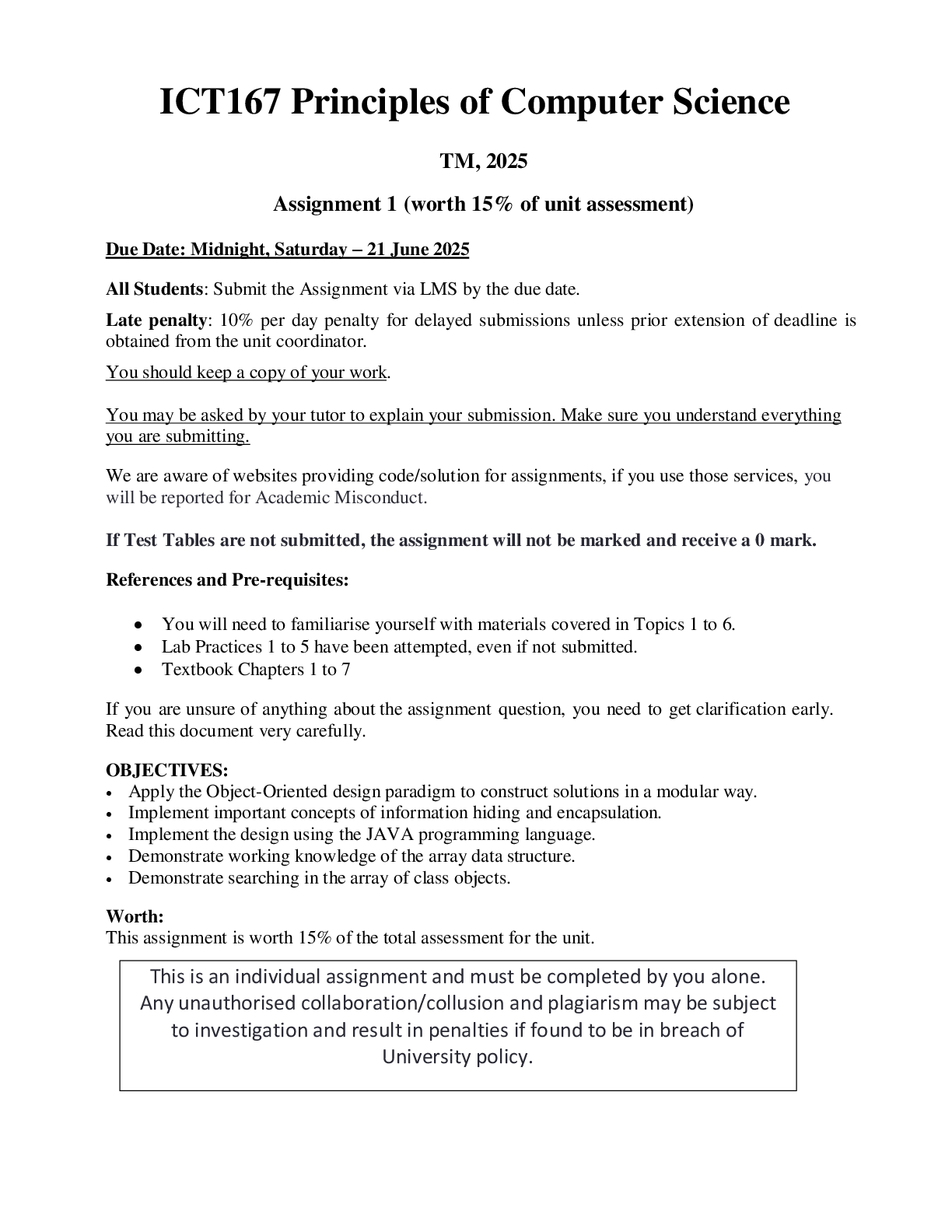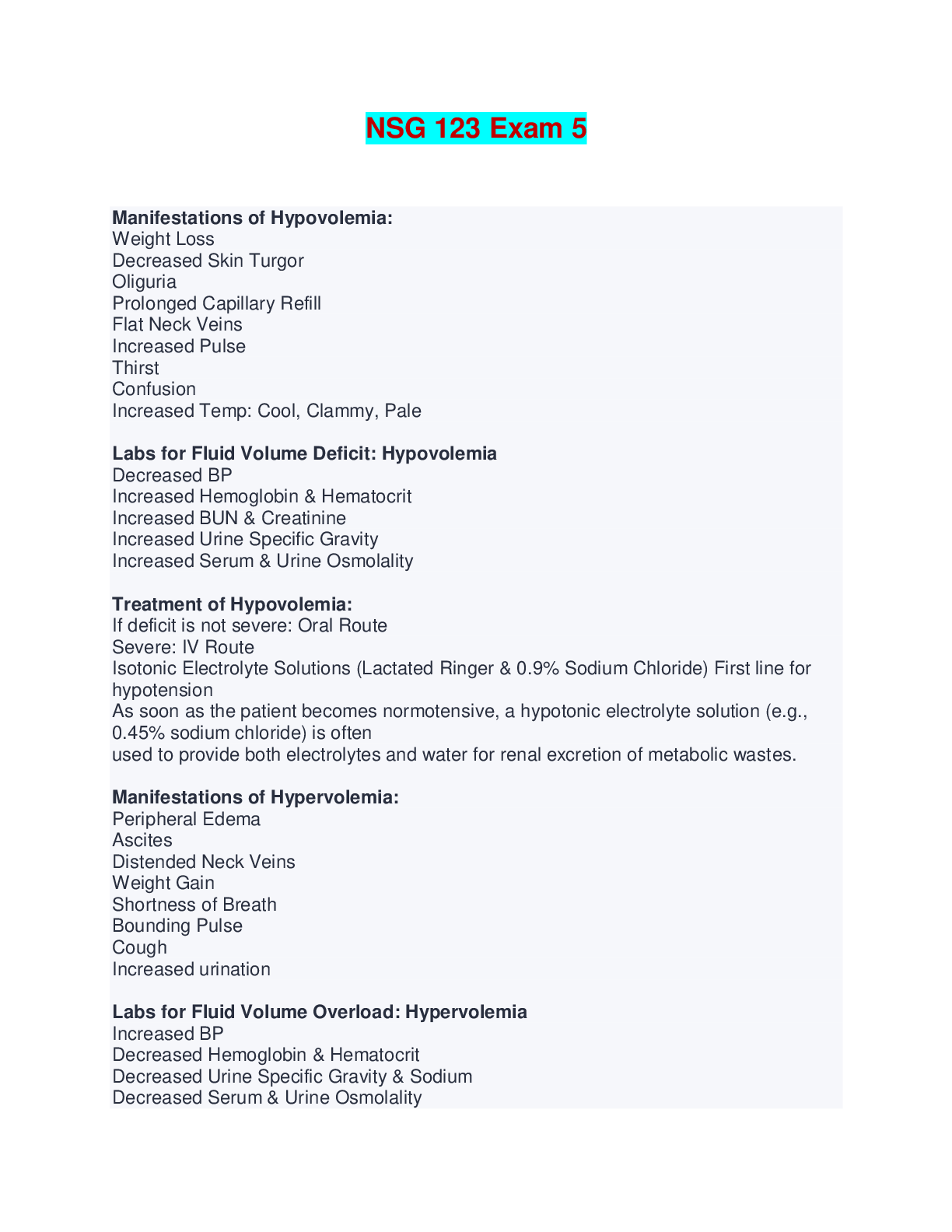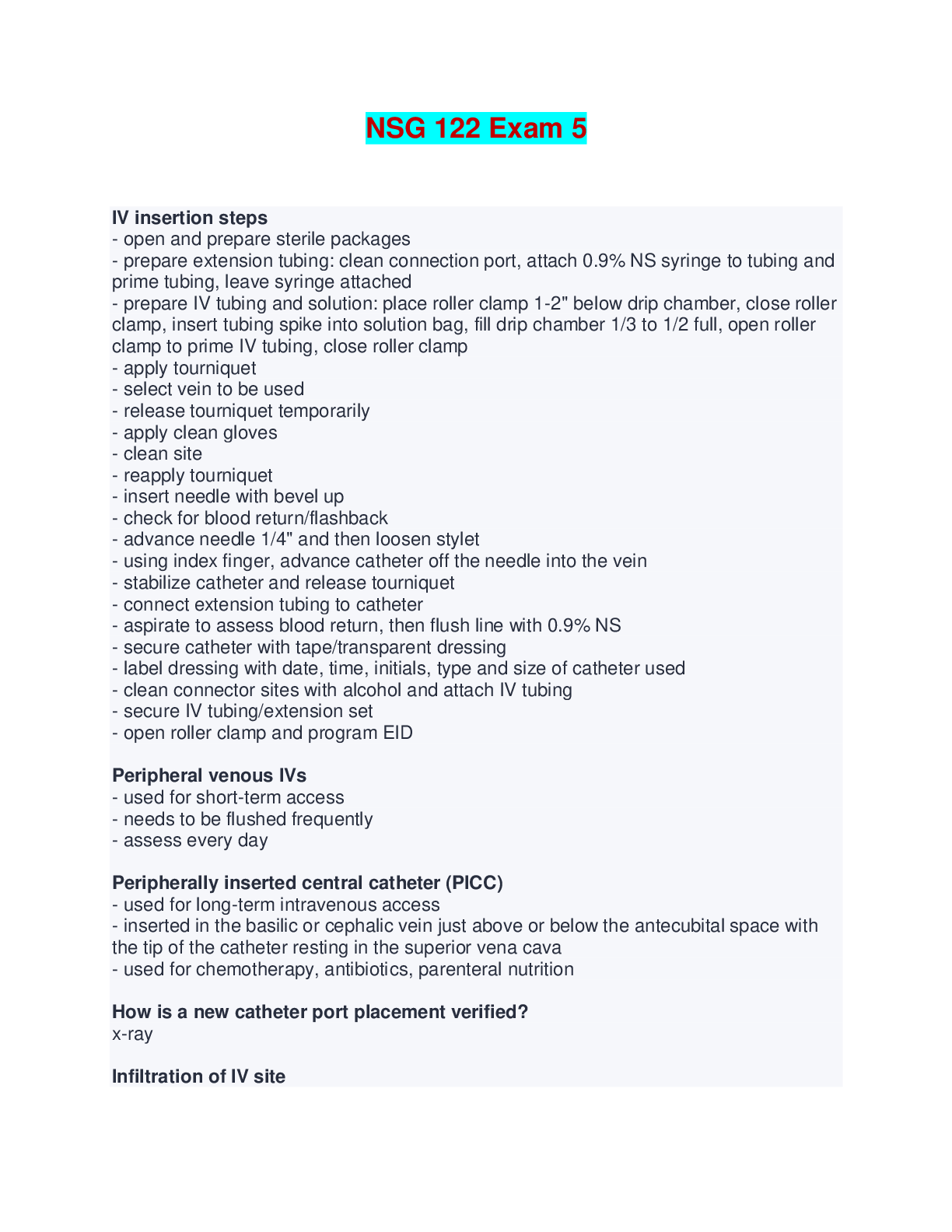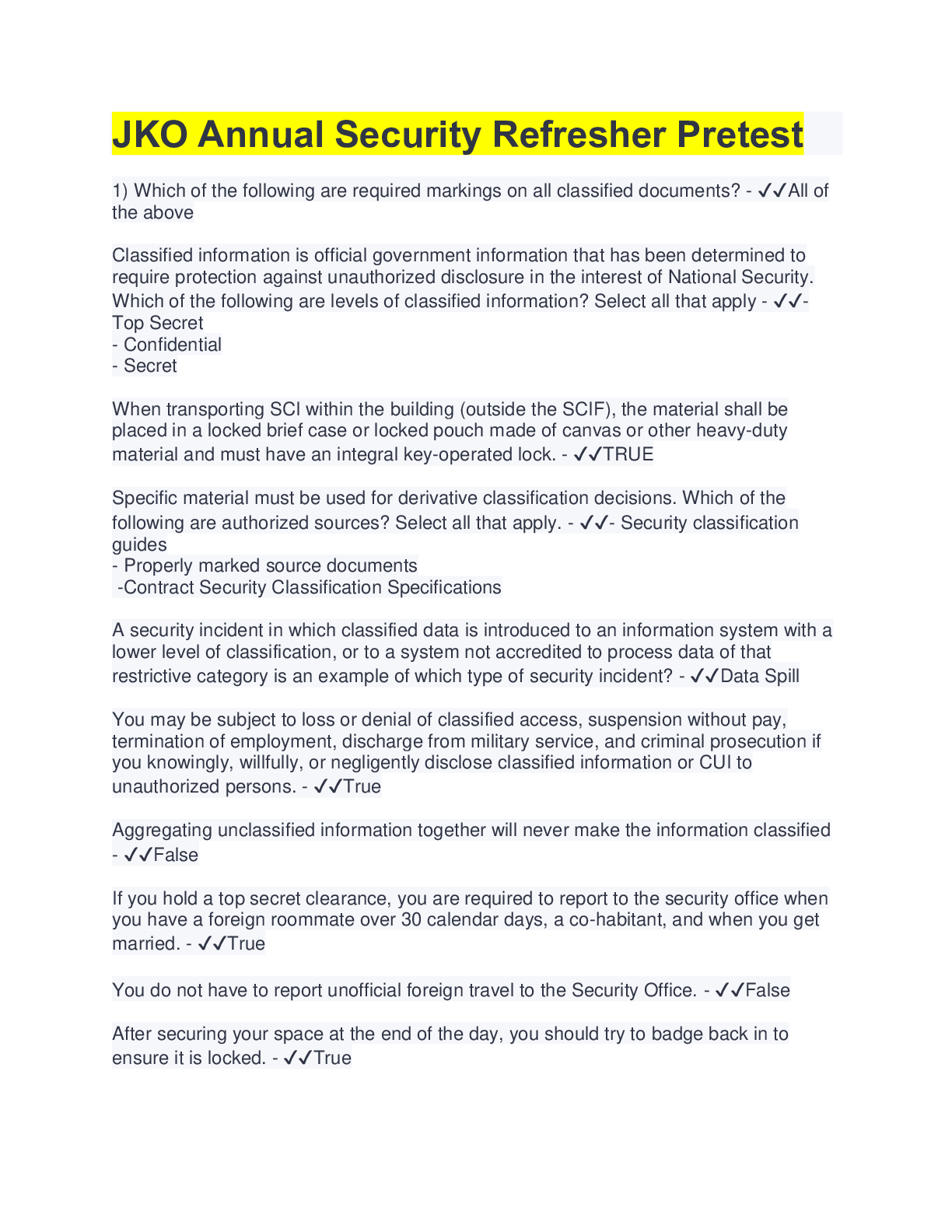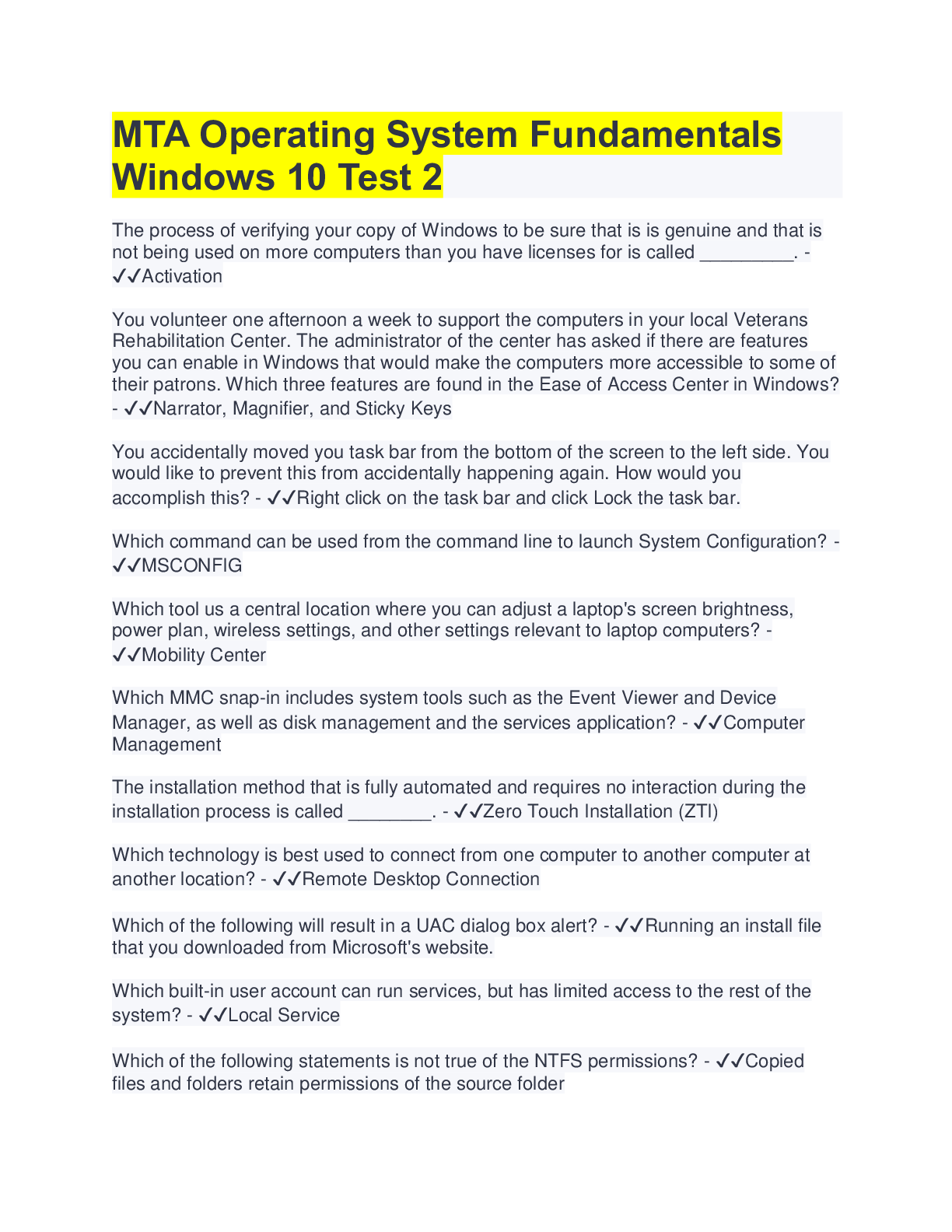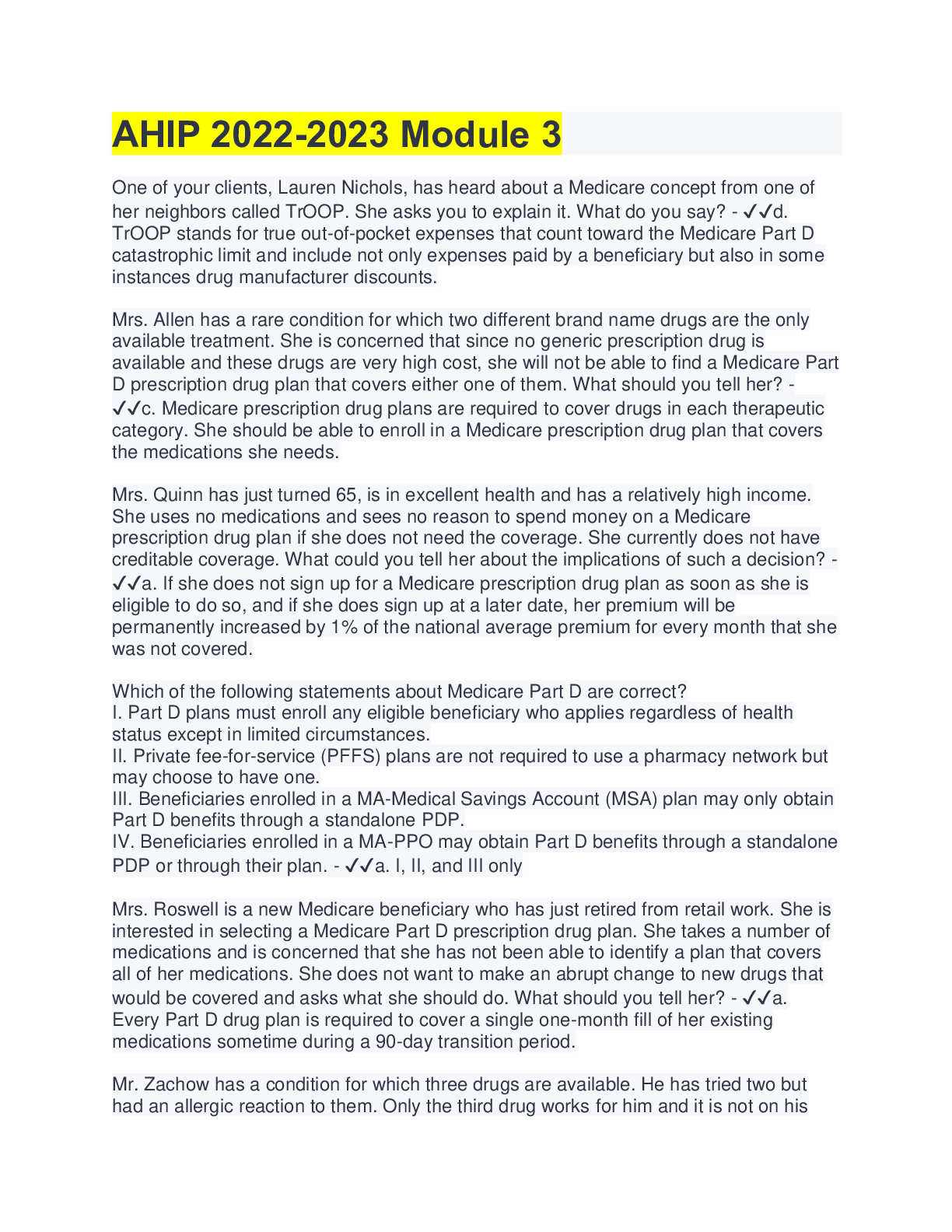Construction and The Built Environment > EXAM > COSC 325 Houston (Mechanical) Exam | With 100% Correct Answers (All)
COSC 325 Houston (Mechanical) Exam | With 100% Correct Answers
Document Content and Description Below
COSC 325 Houston (Mechanical) Exam | With 100% Correct Answers What division is mechanical Division 23 how many Btu/H in a ton 12000 What is comfortable relative humidity? 50% Air velocity the spee... d at which air moves from one point to another what is ideal air movement 40fpm What is the most common duct material sheet metal, measured in gauge (smaller number thicker material) Why insulate duct work Condensation What is the average CO2 level for good indoor air quality? 800 Make up air Air supplied to a space to replace exhausted air Exhaust air Any foul or unwanted air removed from a space by mechanical means. What is the normal building space requirement for fresh outside air 20 cubic feet per minute per person in the space ASHRAE American Society of Heating, Refrigerating and Air-Conditioning Engineers 5 requirements for comfort proper temperature, humidity, circulation, filtration, ventilation Dry Bulb Temperature the measurement of sensible heat Relative Humidity (RH) the amount of water vapor present in air expressed as a percentage of the amount needed for saturation at the same temperature. Dew point(dp) the temperature below which moisture in the air begins to condense Enthalpy (h) The total heat contained in a substance measured from a baseline of 32 degrees Fahrenheit Where is relative humidity found on a psychometric chart? the curving lines that run from the bottom left side of the chart up to the right Forced air system fuel heats air, which is blown through ducts and vents; cool air is returned to the furnace to be reheated Three must common types of furnaces upflow, horizontal, and downflow (counterflow) Upflow Furnace return air is supplied at the bottom of the unit and the heated air is delivered to the bonnet above the furnace where it is distributed through ductwork Horizontal flow furnace furnace in which heated air flows horizontally as it leaves the furnace Downflow Furnace furnace is typ. located on first floor and heated air is pushed down into ductwork located in a crawl space or basement. Blower pump-like mechanism which generates airflow Blowers used in forced-air systems propeller, centrifugal, axial Propeller blower blades mounted on a central bulb Centrifugal blower Consists of a scroll, blower wheel, shaft, and inlet vanes Axial flow blower -Consists of a blower wheel that works like turbine wheel -Used in medium to high pressure forced air heating systems Static Pressure pressure that acts through weight only with no motion Heat exchanger A device that transfers heat from one substance to another without allowing substances to mix (think radiator) Low-efficiency filter 40% of large particulate matter Medium efficiency filter 40 to 80% of common-size particulate matter High-efficiency particulate air (HEPA) filters 80 to 90 % of small particulate matter Electrostatic filters over 90% of minute particulate matter Trunk and Branch System consists of one or more trunks that run out from the supply plenum of a furnace Trunk main supply duct that extends from the supply plenum Register device that covers the opening of the supply air ductwork Grill device that covers the opening of the return ductwork Thermostat a device used to control the temperature. it operates and controls the burners or heating elements in a heating unit Set-point temperature the temperature at which the switch in a thermostat opens and closes VFD Variable Frequency Drive. must be installed and serviced by trained personnel Unit heater same as furnace, but not connected to a duct system Duct heater unit heater that is installed in a duct and supplied with air from a remote blower Infrared radiant heater individual heater units that produce infrared radiation (think of outdoor patios in restaurants) Steam heating system heating system that uses steam to carry heat from the point of generation to the point of use Hydronic system uses water or other fluid to carry heat from point of generation to point of use Boiler central element of a steam or hydronic system. a pressure vessel that safely and efficiently transfers heat to water Low Pressure Hot Water Heating Boiler does not exceed 160 psi and 250 degrees F Hot water supply boiler bigger than 120 gal, heat input greater than 200000 Btu/hr., operating temp higher than 200 degree F Power hot water (high temp) boiler bigger than 160 psi and 250 degrees F Low-Pressure Steam Boiler not to exceed 15psi of steam Power steam boiler bigger than 15psi, used when steam is utilized for purposes other than solely heating Main Steam Stop Valve Valve or valves found on the main steam line leaving the boiler. Used to place the boiler on line or take it off line Steam header distribution pipe that supplies steam to branch lines Steam trap steam boiler accessory that removes air and condensate from steam lines and heating units Centrifugal pump Used mainly on hydronic systems. has a rotating impeller inside a cast iron or steel housing. Expansion tank A chamber or tank provided in a hot water heating system to allow for expansion of the water in the system as its temperature rises. Pressure-reducing valve automatic device used to convert high or fluctuating inlet water pressure to lower or constant pressure Flow control valve A device that controls the flow (gpm) of water in a hydronic system Terminal device The end point, where the air dumps into the room. (surface radiation, standing radiator, radiant panel) programmable thermostat stand alone thermostat that can be programmed by building occupants Refrigeration process of moving from an area that is undesirable Compressor mechanical device that compresses refrigerant or other fluid Refrigerant R-22 older refrigerant "freon" R-410a Used in newer systems, much more efficient but operates at a higher pressure so it cannot be used in older systems Expansion device (TXV) Thermal Expansion Valve. Controls the amount of refrigerant into the evaporator for temperature control Expansion Device (EXV) Electronic Expansion Valve. Requires electrician to install. This is a more efficient Expansion Device but overall can have issues with slow cool off times. Evaporator The component in a refrigeration system that absorbs heat into the system and evaporates the liquid refrigerant. Chiller A device that removes heat from a liquid, typically as part of a refrigeration system used to cool and dehumidify buildings. The system; it has the evaporator and condenser. Used in Hydronic Three types of chillers Low-pressure, High-Pressure, Absorption Chilled-water How do you know which line is the Suction line? It's insulated You see an insulated line and a skinny line on an air handler. Which one is the liquid line? the skinny, higher pressure one [Show More]
Last updated: 4 months ago
Preview 3 out of 8 pages

Loading document previews ...
Buy this document to get the full access instantly
Instant Download Access after purchase
Buy NowInstant download
We Accept:

Also available in bundle (1)
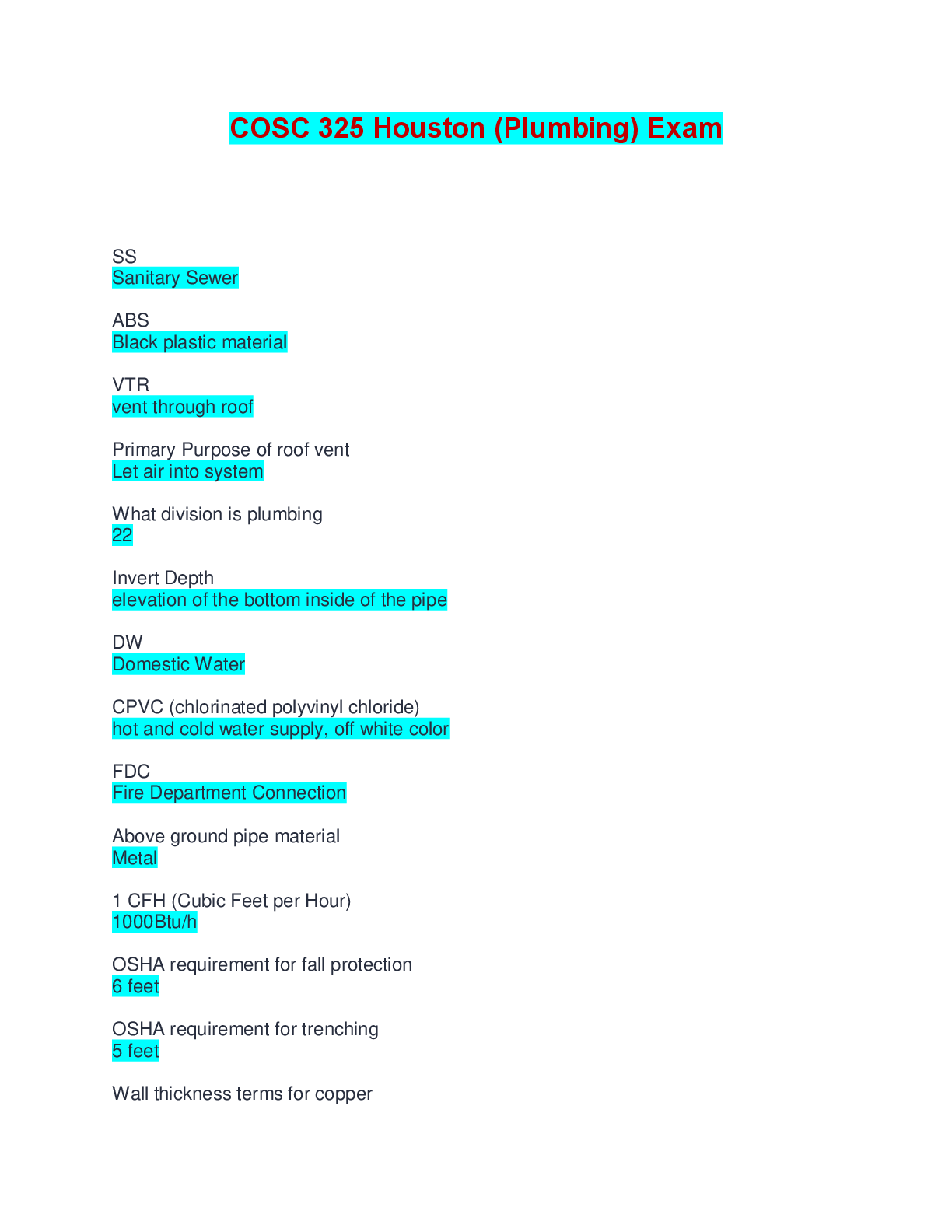
COSC 325 HOUSTON MECHANICAL, ELECTRICAL AND PLUMBING EXAM BUNDLE
COSC 325 HOUSTON MECHANICAL, ELECTRICAL AND PLUMBING EXAM BUNDLE
By Ajay25 4 months ago
$20
3
Reviews( 0 )
$12.00
Can't find what you want? Try our AI powered Search
Document information
Connected school, study & course
About the document
Uploaded On
Mar 25, 2025
Number of pages
8
Written in
Additional information
This document has been written for:
Uploaded
Mar 25, 2025
Downloads
0
Views
7

